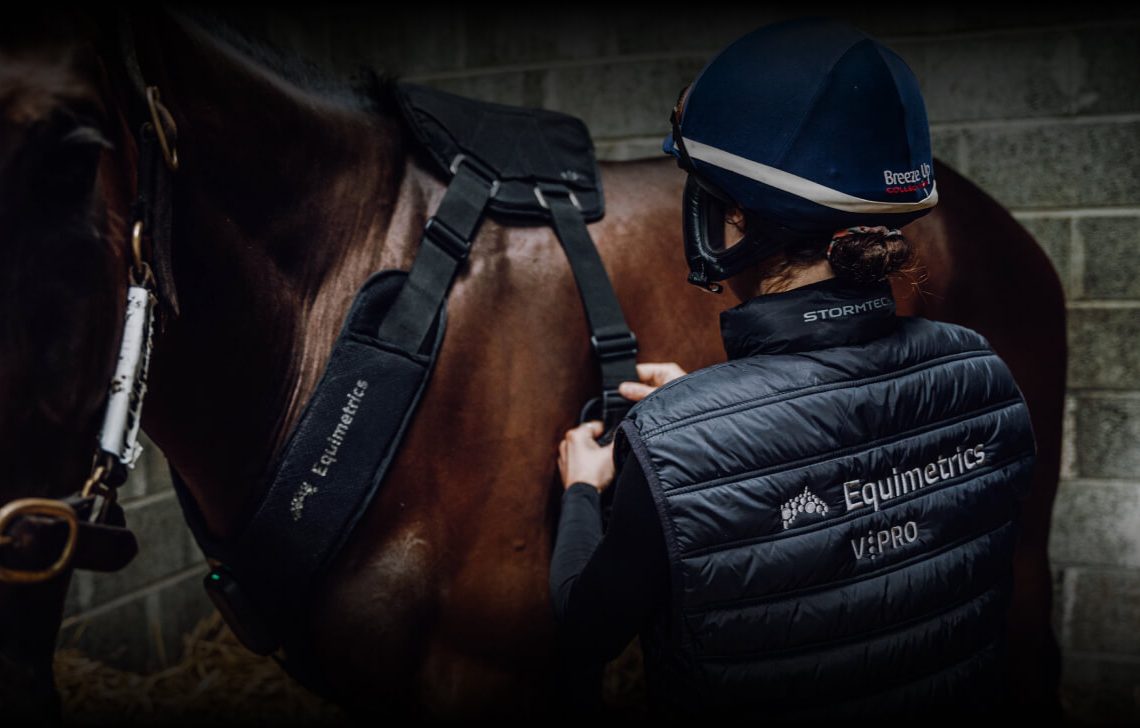Veterinary Resources & Clinical Studies – The Value of Observing Biometric Data
Studies in the area of Equine Cardiology & other Biometric Data Monitoring:

Cortisol release and heart rate variability in sport horses participating in equestrian competitions. Journal of Veterinary Behavior 8: 87-94
Equestrian competitions require both physical activity and mental adaptation in horses. Cortisol, heart rate, and heart rate variability (HRV) are accepted stress parameters and, in this study, have been determined in horses participating in equestrian competitions for up to 3 consecutive days.

Can heart rate variability parameters derived by a heart rate monitor differentiate between atrial fibrillation and sinus rhythm?
Heart rate variability (HRV) parameters, and especially RMSSD (root mean squared successive differences in RR interval), could distinguish atrial fibrillation (AF) from sinus rhythm(SR) in horses, as was demonstrated in a previous study.

Effect of exercise intensity and repetition on heart rate variability during training in elite trotting horse
RR intervals of ten elite trotting horses were recorded during an interval training session performed on track.

The use of heart rate variability analysis to detect arrhythmias in horses undergoing a standard treadmill exercise test.
Little is known about normal heart rate variability (HRV) in horses during exercise. It can be difficult to separate premature beats from normal beat-to-beat variation at higher heart rates.

Clinical application and reliability of a post abdominal surgery pain assessment scale (PASPAS) in horses.
The aim of this study was to refine a multi-dimensional scale based on physiological and behavioural parameters, known as the post abdominal surgery pain assessment scale (PASPAS), to quantify pain after laparotomy in horses.

Comparison of heart rate and heart rate variability obtained by heart rate monitors and simultaneously recorded electrocardiogram signals in non-exercising horses.
The aims of this study were to compare data from horses obtained by Polar HRMs and a portable Televet electrocardiogram device and to determine appropriate recording times in horses

Heart rate variability in trotters during different training periods.
Endurance training induces changes in autonomic nervous system functions. High intensity training includes the risk of overtraining, in man and horse

Agreement between electrocardiogram and heart rate meter is low for the measurement of heart rate variability during exercise in young endurance horses.
Analysis of the heart rate variability (HRV) gains more and more importance in the assessment of training practice and welfare in equine industry.

Heart rate variability in horses with acute gastrointestinal disease requiring exploratory laparotomy.
To describe heart rate variability (HRV) in horses with acute gastrointestinal disease that undergo exploratory laparotomy.

Equine electrocardiography.
A definitive diagnosis of any arrhythmia or investigation of unexplained tachycardia or bradycardia is made with electrocardiography (ECG).
Studies in the area of Human Health Monitoring

Smartphones and wearable technology: benefits and concerns in cardiology.
Wearable devices along with smartphone technology are becoming more common in developed nations such as Australia, with the number of connected devices expected to increase from 526 million in 2017 to 1.1. billion worldwide in 2022.

Monitoring training load to understand fatigue in athletes.
Many athletes, coaches, and support staff are taking an increasingly scientific approach to both designing and monitoring training programs.

Monitoring changes in physical performance with heart rate measures in young soccer players.
The aim of the present study was to verify the validity of using exercise heart rate (HRex), HR recovery (HRR) and post-exercise HR variability (HRV) during and after a submaximal running test to predict changes in physical performance over an entire competitive season in highly trained young soccer players.

Prevention, diagnosis, and treatment of the overtraining syndrome: Joint consensus statement of the European college of sport science and the American College of Sports Medicine. Medicine and Science in Sports and Exercise 45: 186-205.
Successful training not only must involve overload but also must avoid the combination of excessive overload plus inadequate recovery.

Download the V-PRO Brochure
Get the V-PRO brochure.
Request a Demo
If you would like to find out more or a request a demo, please contact us.

